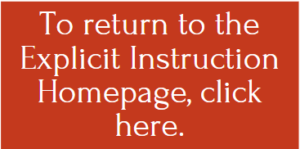Explicit Instruction Case Study Part Two

In the first part of the case study, we saw how Mrs. Adams used the elements of explicit instruction. Let’s review what she did in her lesson introduction:
Element #1 – She focused her content on digraphs and chose to start with the digraph “sh.”
Element #5 – She began her lesson by telling students what they will be learning and what they will be able to do by the of the lesson.
Element #6 – She reviewed individual letters sounds for “s” and “h” before beginning her instruction on digraphs. She wanted to make sure students knew that “s” and “h” will make a combined different sound in the digraph “sh.”
Element #8 – She used clear and concise language with students. She used the term digraph to explain what “sh” was and the term “letter sounds” to refer to individual sounds.
Element #11 – She provided students the opportunity to coral respond to letter sound prompts.
Element #13 – She provided quick and affirmative feedback after each student choral response.
Let’s see how Mrs. Adams continues her lesson with the elements of explicit instruction.
“Alright, now that we know what sound the digraph “sh” makes, let’s look at some examples and non-examples of “sh” in a word. These will help us to identify when a word has “sh” and when it doesn’t.
“Let’s look first at the features we know make “sh” a digraph.” (Presents each students with a small card with the letters “sh” the sound “sshh” and a picture and the word for “shark.”
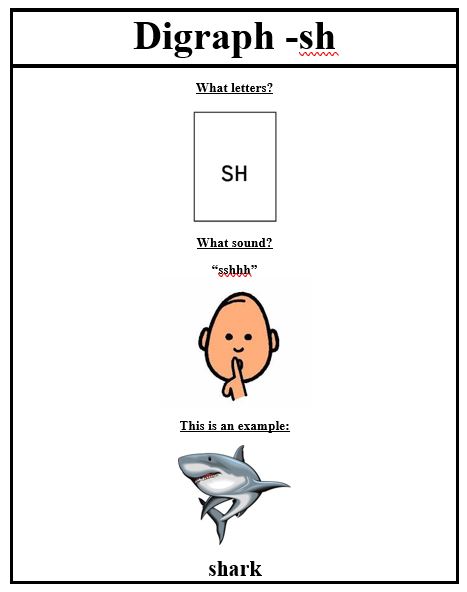
“These are everything that work needs to have the digraph “sh” in it. It must have the letters “s” and “h” right next to each other, the letters “sh” must make the sound “sh” and they can be at the beginning of a word.”
“Before we start our examples and non-examples, let’s practice the sound for the digraph “sh” again. (Presents students with letter card for “sh.”)

“This is the digraph “sh.” The digraph “sh” says “sshh” What sound does the digraph “sh” make? Everyone – “sshh.” Very good, the digraph “sh” says “sshh.”
“Let’s practice some examples and non-examples.”
(Mrs. Adams has created a variety of examples and non-examples. Some of the examples have words with and without “sh” and pictures of words that have the sound “sshh” in them. She wants the students to be able to distinguish “sh” both in written words and auditory in spoken words.”
“Here is our first word to look at. While we are looking at our examples and non-examples, use you “sh” card to help you.”
“This is the word ship.” (Presents students with the word card ship).
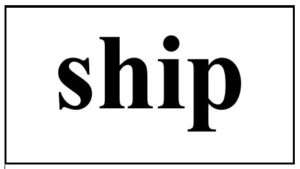
“Ship is an example of the digraph “sh.” The letters “sh” are together at the beginning of the word and the letters “sh” in ship say “sshh.” This is an example of the digraph “sh.”
Let’s look at another card. (Presents students with the word card “hats.”
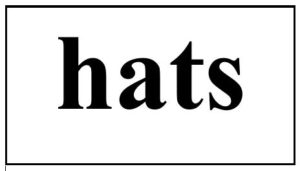
This is a non-example of the digraph “sh.” The letters “sh” are not together and they do not say “sh.” In this word, “h” is and the beginning and “s” is at the end. Those letters say “huh” and “sss.” This is a non-example of the digraph “sh.”
Let’s look at another card. (Presents students with a card with a “shop” on it.)
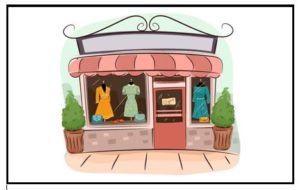
“This is a shop. The word “shop” has the sound “sshh” in it. This is an example of a word with the digraph “sh” in it. Let’s break the sounds apart “sshh” and “op.” This word has “sshh” in it so this is an example of digraph “sh.”
“Let’s look at one more card.” (Presents students with a picture of a stick)

“This is a stick. A stick is not an example of a “sh.” This sound does not have the sound “sh” in it. This word does not have the sound “sshh” in it and this is a non-example of the digraph “sh.”
“Now that we have seen some examples and non-examples of the digraph “sh,” let’s practice some together.”

Let’s break down Mrs. Adam’s lesson introduction and identify which of the elements of explicit instruction that she used.
In this part of her lesson, Mrs. Adams has provided her students with a range of examples and non-examples for the digraph “sh.” (Element #9)
She is delivering this portion of the lesson at a brisk pace, to eliminate students being off task while she presents the examples and non-examples. (Element #14)
Let’s visit Case Study Part 3 to see how Mrs. Adams continues using the elements of explicit instruction in her lesson.
Click on the image below to see Case Study Part 3.
References:
Archer, A. L., & Hughes, C. A. (2011). Explicit instruction: Effective and efficient teaching. New York: Guilford Press.

